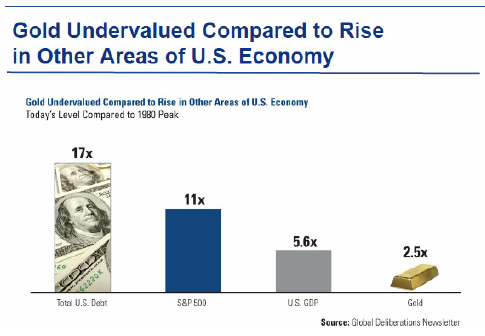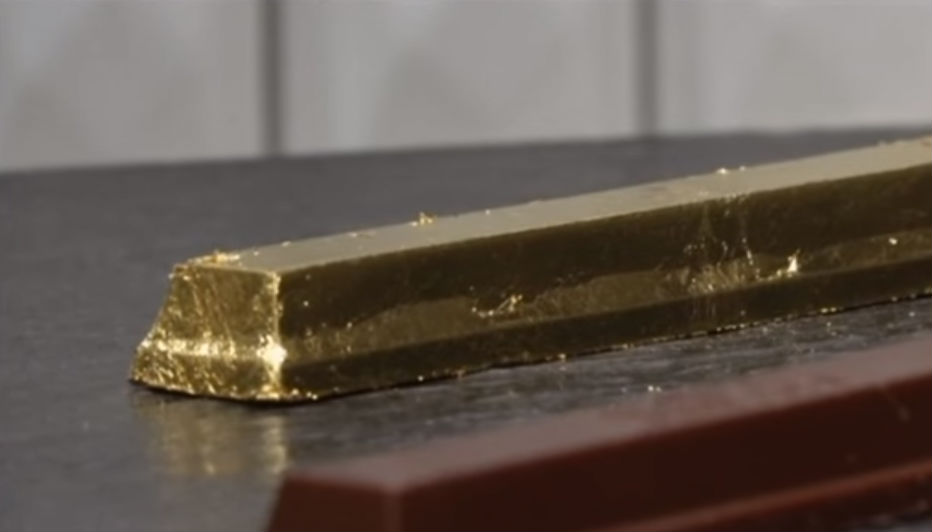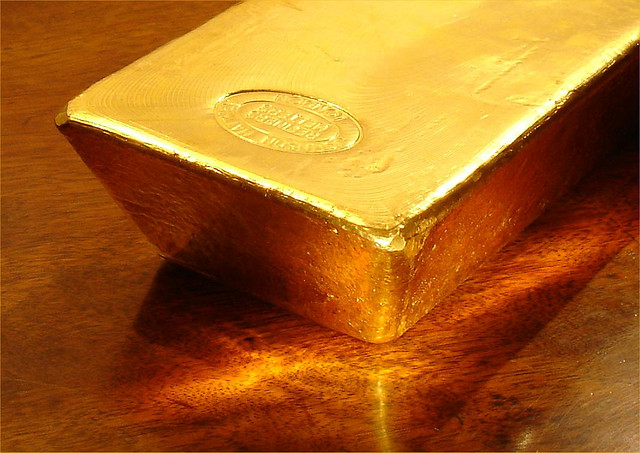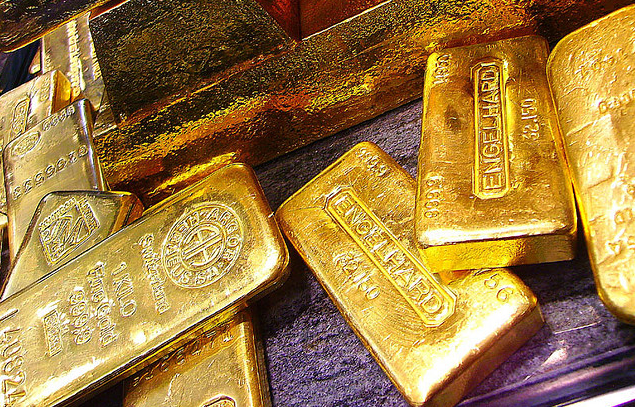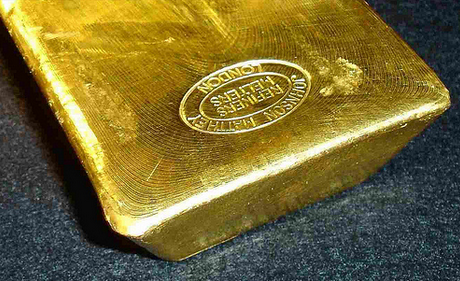Nyheter
European Gold Centre, More crisis to come, gold more actual than ever
 Last month I wrote that it maybe was funny to ask the question about $10,000 gold. But apparently I was not the only one to put that price tag on the gold price as a distinct possibility. A few other gold writers came out with their reasoning and it gave me a feeling of comfort that they included some real prominent ones. For instance, when someone like Nick Barisheff talks, I listen. And you should too.
Last month I wrote that it maybe was funny to ask the question about $10,000 gold. But apparently I was not the only one to put that price tag on the gold price as a distinct possibility. A few other gold writers came out with their reasoning and it gave me a feeling of comfort that they included some real prominent ones. For instance, when someone like Nick Barisheff talks, I listen. And you should too.
It has been quite some time since I published an article from Nick Barisheff. Since I met him several years ago in Switzerland, I have been impressed by him and his opinions, his foresight and realism, his projections and courage, his determination and judgement, his expert vision. Nick has been associated with BMG, the Bullion Management Group, which is one of the foremost advocates of buying gold and silver bullion and investing in the precious metals bullion funds that it manages.
Last week, Nick presented his Outlook for 2012 at the 18th Annual Empire Club Outlook Luncheon in Toronto. I am very pleased to refer you to his speech ”WHY RISING DEBT WILL LEAD TO $10,000 GOLD” which is now posted at my website on the page MEDIA LINKS under the heading GOLD COMMENTS. An absolute must to hear and see.
Another source of prominence was again Frank Holmes, CEO and Chief Investment Officer of U.S. Global Investors, who headed a panel in a recent web broadcast. The excellent panel members relayed a truly intelligent high-finance conversation, including a smart address by U.S. Global’s Brian Hicks, who made a case for substantial higher gold prices, among other things because of the unprecedented today’s money supply.
The chart on the left side shows how serious the current level of the global money supply already is right now. In my reasoning that will follow, you will see that I expect the money supply to continue to rise to maybe even dramatic levels over the next few years. The chart on the right side shows that gold could, and should be much higher if only the money supply would be backed by gold. Of course I know it is wishful thinking to expect that all the money in the world should be backed by gold, but look at the figure at the end of the purple line …., $10,116 per ounce of gold. Sounds familiar?
Another illustration of the undervaluation of gold at this time is the following chart from the U.S. Global webcast presentation:
The above chart shows the increases of Total U.S. Debt, the S&P 500, the U.S. GDP and the gold price since 1980; also from this viewpoint is gold obviously undervalued. One of my other gold observing friends has recently spoken out about gold. Jeffrey Nichols is expecting that gold can possibly gain as much as 50% in value, albeit that also occasional big declines may occur. His recent trip to China has convinced him that demand there will continue to be strong as more and more new buyers are coming to the market whereas the older buyers are inclined to hold onto their holdings. Jeff reasons that this will enlarge the shrinking of the ”free float” of physical gold and enhance the market’s real-world supply and demand fundamentals.
As you know, I have been an advocate of higher gold prices since 2002 when I saw the prevailing markets of long-lagging metal prices reaching an over-exaggerated and obvious bottom. Those who have followed my writings since I came back to the market in 2003 have seen that I have continuously given my considerations and reasoning for this positive attitude. Also in my more recent writings I have repeatedly stated that the recent price weaknesses were not structural and would be overcome. Looks like we have reached that.
One of my major concerns in today’s world is the continuing demand for loans to be used to cover the ever-growing deficits. After it appeared that there was an agreement reached in the Eurozone to solve or rather call to a halt, the precarious position of Greece and some other weakening European countries, the real situation turned out to be a little different last week. Greece shows to have remarkable comparisons with a bottomless bucket and seems to be more or less helpless. Despite all the support and the financial injections, Greece may be the first country that will literally go bankrupt if they will not succeed to get their financial matters in order soon. Already in March they face the first upcoming payments to serve their huge debts and granted, they are in the middle of frantic discussions with their debtors about a more definite solution. The new government has tried to show the world that they are serious in acting in line with what the European lenders want from them, taking drastic steps to get their internal finances reorganized, by publishing a long list of individuals who owe the government a huge amount of taxes. Greece could meet their March obligations if ”only” these back taxes would be received. But that is true wishful thinking……
In the meantime, the negotiations between the Institute for International Finance (IIF) and the Greece government are continuing to restructure €155 billion of debt to private parties, such as international banks, into new 30-year bonds. These lenders have indicated that they are willing to write off 50% of their loans but that seems not to be enough. The government states that a write-off of at least 70% should be necessary to lower the total debt of Greece from the current 160% of the GDP to 120% by the year 2020. Time will be of the essence, because if an agreement will not be reached now, it will endanger the new financial support package of €130 billion from the European Union and the IMF. If there will be no agreement, actual bankruptcy will be imminent, an unprecedented situation.
But it is not only Greece that is a serious patient in the hospital of international government finance. Standard & Poor’s made earlier fears come true in depriving France and Austria from their precious triple-A rating. In their slipstream, Italy, Portugal and Cyprus saw their ratings lowered by two levels. Not so surprising as the US and Japan already lost their triple-A status earlier. Only Germany, the Netherlands and Finland are left as the most significant European countries with the highest ranking.
In my simple and down-to-earth view, the 50-70% writing-off of the loans to Greece and the consequence of the lower credit ratings can only lead to one thing: the need for money will be increasing substantially and higher interest rates will make that money much more expensive than ever. As solutions are not easy and sorting the necessary effect on the short time, it is likely that governments have no other choices than to get the dust off the money printing machines or open all doors to China and India……. Who said that gold is just a relic from ancient times and has lost its function…?
It certainly was not Eric Sprott, the founder and driving force of Sprott Asset Management LP, who just delivered Part Three of his article ”THE FINANCIAL SYSTEM IS A FARCE”. It is interesting how he as an internationally recognized money manager and investment strategist looks at the subject of Europe and finance. Read this quote:
”Then there’s Europe and the European Central Bank (ECB). Back in December, the mighty ECB had to step in with yet another massive liquidity injection to avert a total meltdown in the EU banking system. On December 21st, they flooded 523 separate EU banks with a ”Long Term Refinancing Operation” (LTRO) program totaling €489.1 billion ($626 billion). The program consists of loans that are due in three years and will charge an accommodating 1% interest rate. The liquidity injection will allow the EU banks to participate in a delightfully convenient carry-trade whereby they can take the borrowed money at 1% interest and invest it in various sovereign debt auctions that will likely pay them 3% or higher. The banks will keep the difference in profit, and the EU PIIGS countries get to breathe easier knowing they’ll be able to sell their garbage paper to the EU banks at suppressed rates as long as the LTRO loan money lasts. And the best part? It doesn’t involve any money printing, so there’s really no risk of inflation, you see?
So just so we’re on the same page, if everything goes according to plan this year, European sovereign governments will fund their debt auctions with borrowed money lent to them by over 500 European banks who have themselves borrowed hundreds of billions of euros from the European Central Bank,… who as far as we can tell, borrowed those euros from the various EU sovereign states (or simply printed them). Do you get it? Do you see the circularity? Do you see the can being kicked down the road? And guess what?
Since €489.1 billion is clearly not enough to avert disaster this year (most EU banks are so undercapitalized they’ve simply parked the borrowed LTRO money back with the ECB at 0.25% interest), the ECB has promised to launch another LTRO injection this coming February! No wonder gold was down in December. They completely solved the European debt crisis!”
I trust the not so happy views in this issue of GOLDVIEW will serve you as food for your thoughts. Times are changing, it is your choice to rethink your investment habits. Gold in any possible form should be part of your portfolio. A few years from now, gold will have made the difference……..!
Henk J. Krasenberg
European Gold Centre
[hr]
European Gold Centre
European Gold Centre analyzes and comments on gold, other metals & minerals and international mining and exploration companies in perspective to the rapidly changing world of economics, finance and investments. Through its publications, The Centre informs international investors, both institutional and private, primarily in Europe but also worldwide, who have an interest in natural resources and investing in resource companies.
The Centre also provides assistance to international mining and exploration companies in building and expanding their European investor following and shareholdership.
Henk J. Krasenberg
After my professional career in security analysis, investment advisory, porfolio management and investment banking, I made the decision to concentrate on and specialize in the world of metals, minerals and mining finance. From 1983 to 1992, I have been writing and consulting about gold, other metals and minerals and resource companies.
The depressed metal markets of the early 1990’s led me to a temporary shift. I pursued one of my other hobbies and started an art gallery in contemporary abstracts, awaiting a new cycle in metals and mining. That started to come in the early 2000’s and I returned to metals and mining in 2002 with the European Gold Centre.
With my GOLDVIEW reports, I have built an extensive institutional investor following in Europe and more of a private investor following in the rest of the world. In 2007, I introduced my MINING IN AFRICA publication, to be followed by MINING IN EUROPE in 2010 and MINING IN MEXICO in 2012.
For more information: www.europeangoldcentre.com
Nyheter
Kinas elproduktion slog nytt rekord i augusti, vilket även kolkraft gjorde

Kinas officiella statistik för elproduktion har släppts för augusti och den visar att landet slog ett nytt rekord. Under augusti producerades 936 TWh elektricitet.
Stephen Stapczynski på Bloomberg lyfter fram att det är ungefär lika mycket som Japan producerar per år, vilket innebär är de producerar ungefär lika mycket elektricitet per invånare.
Kinas elproduktion kom i augusti från:
| Fossil energi | 67 % |
| Vattenkraft | 16 % |
| Vind och Sol | 13 % |
| Kärnkraft | 5 % |
Stapczynskis kollega Javier Blas uppmärksammar även att det totala rekordet inkluderade ett nytt rekord för kolkraft. Termisk energi (där nästan allting är kol) producerade 627,4 TWh under augusti. Vi rapporterade tidigare i år att Kina under första kvartalet slog ett nytt rekord i kolproduktion.
Nyheter
Det stigande guldpriset en utmaning för smyckesköpare
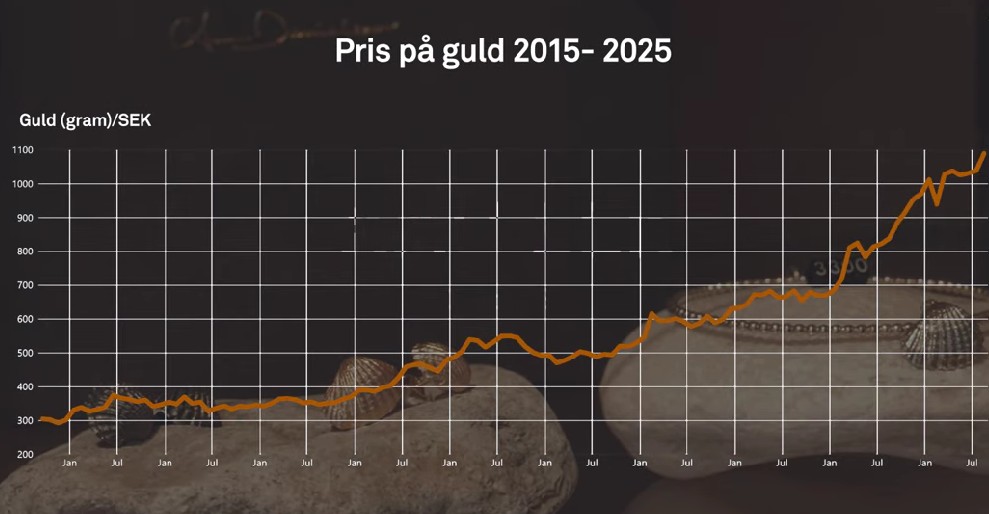
Guldpriset når hela tiden nya höjder och det märks för folk när de ska köpa smycken. Det gör att butikerna måste justera upp sina priser löpande och kunder funderar på om det går att välja något med lägre karat eller mindre diamant. Anna Danielsson, vd på Smyckevalvet, säger att det samtidigt gör att kunderna får upp ögonen för värdet av att äga guld. Det högre guldpriset har även gjort att gamla smycken som ligger hemma i folks byrålådor kan ha fått ett överraskande högt värde.
Nyheter
Aktier i guldbolag laggar priset på guld
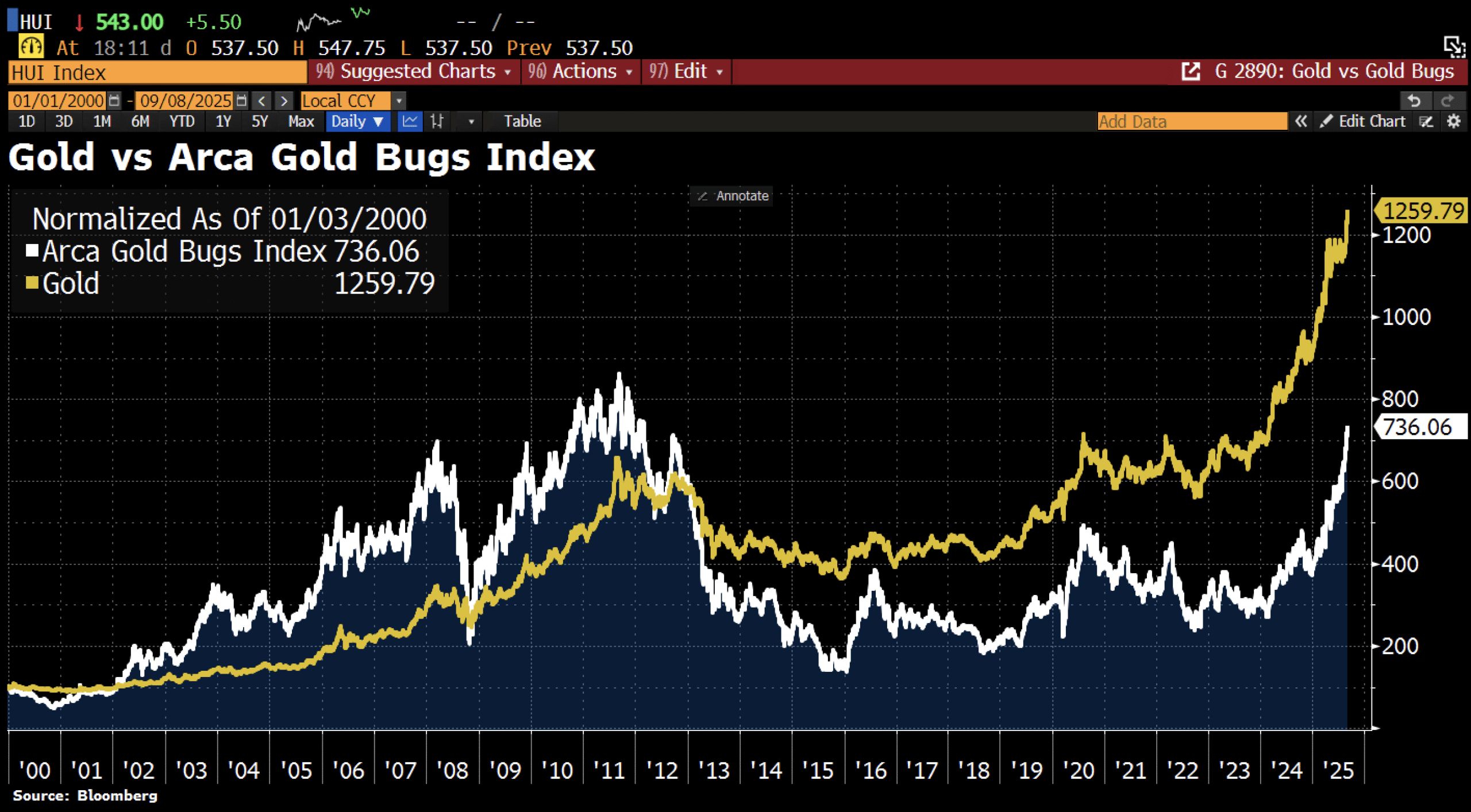
Sedan år 2013 har aktierna i bolag som producerar guld inte alls hängt med prisutvecklingen på guld. I takt med att guldpriset har stigit så har avståndet bara blivit större. Detta trots att riskaptiten på aktiemarknaden i stort är högt.
I diagrammet jämförs priset på guld med Arca Gold Bugs Index, där indexet består av flera av de största guldbolagen.
-

 Nyheter4 veckor sedan
Nyheter4 veckor sedanMeta bygger ett AI-datacenter på 5 GW och 2,25 GW gaskraftverk
-
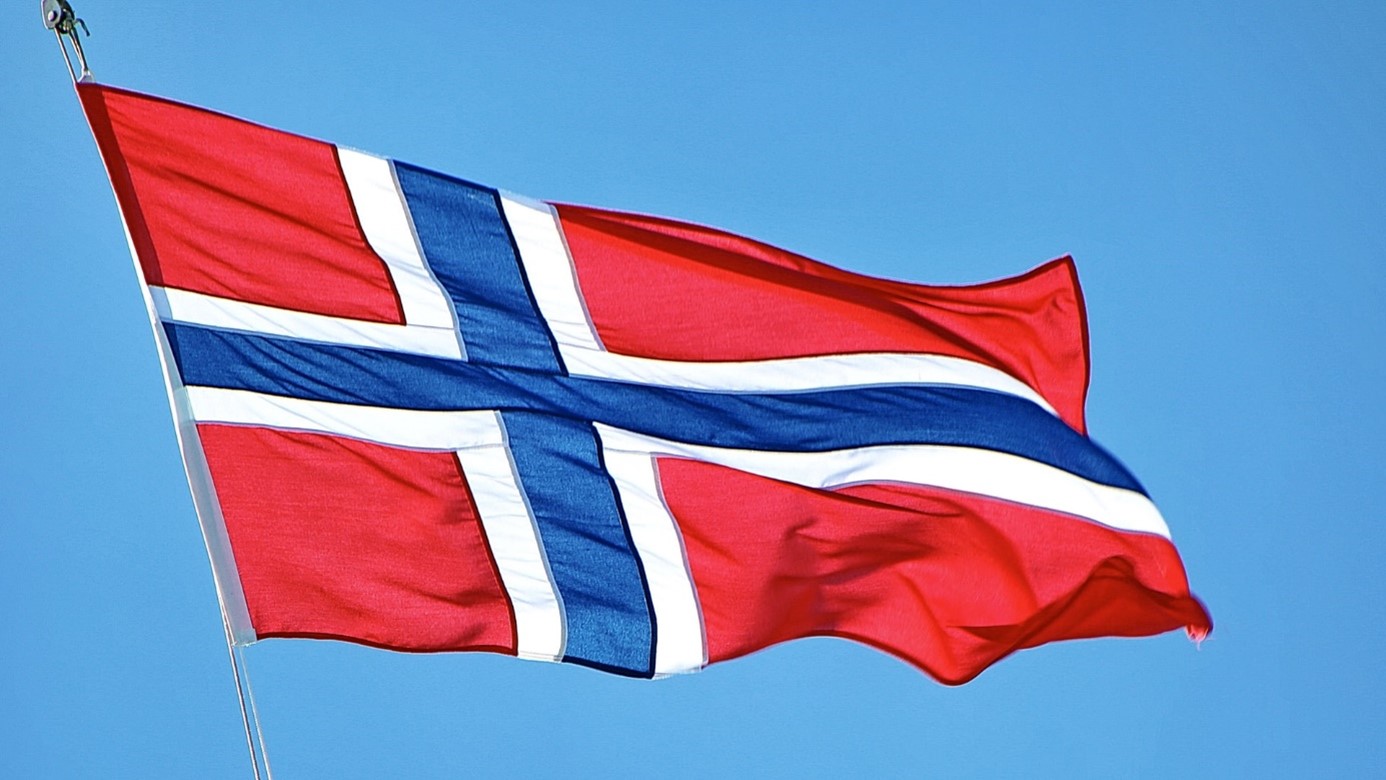
 Nyheter4 veckor sedan
Nyheter4 veckor sedanAker BP gör ett av Norges största oljefynd på ett decennium, stärker resurserna i Yggdrasilområdet
-

 Nyheter4 veckor sedan
Nyheter4 veckor sedanEtt samtal om koppar, kaffe och spannmål
-

 Analys4 veckor sedan
Analys4 veckor sedanBrent sideways on sanctions and peace talks
-

 Nyheter4 veckor sedan
Nyheter4 veckor sedanSommarens torka kan ge högre elpriser i höst
-

 Analys3 veckor sedan
Analys3 veckor sedanBrent edges higher as India–Russia oil trade draws U.S. ire and Powell takes the stage at Jackson Hole
-
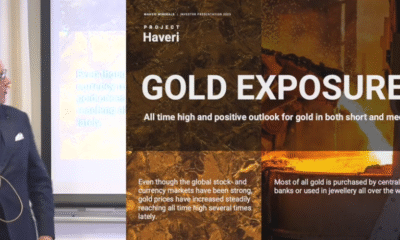
 Nyheter3 veckor sedan
Nyheter3 veckor sedanMahvie Minerals är verksamt i guldrikt område i Finland
-

 Analys3 veckor sedan
Analys3 veckor sedanIncreasing risk that OPEC+ will unwind the last 1.65 mb/d of cuts when they meet on 7 September



